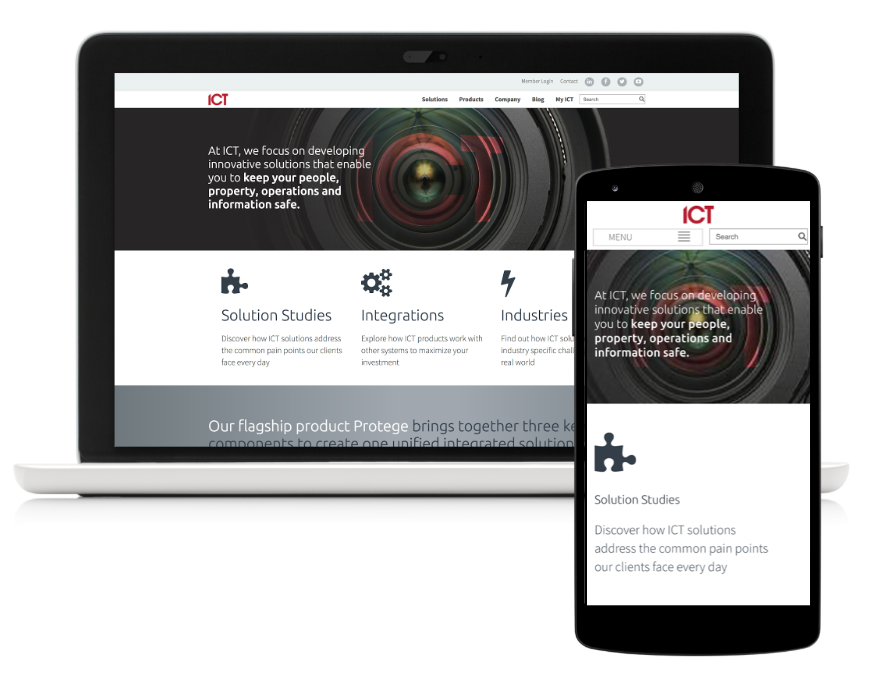A more direct approach to International Markets.
Moving from push to a pull strategy. NZ exporters are using technology to connect directly with customers in-market and actively drive growth.
The challenge for exporters is typically the cost of putting people in every market, region and city to represent the brand and drive sales. In-market distributors have good relationships and logistics networks in-market but they often represent multiple brands, and struggle to sell on behalf of the exporter.
However, there has been a shift in consumer behaviour that exporters can exploit. Both B2B (Business-to-Business) and B2C (Business-to-Consumer) buyers now research online before purchasing, presenting an opportunity to track customer behaviour and influence buying patterns.
94% of B2B buyers research online before purchase.
Only 37% of websites deliver the information they want.
2014 State of B2B Procurement Study from the Aquity Group
As Graham Hawkins writes in his book ‘The Future of the Sales Professional’ (a recommended read), buyers no longer value the personal relationship. Buyers want a low-friction transaction which means:
Ease - they want to be able to find information easily, to contact someone when they choose to and to proceed with the transaction when they decide to go ahead.
Efficiency - they don’t want to go back and forth with a sales person, chasing calls and booking meetings. They’ve done their research, want questions answered and then the deal done.
Low cost - buyers have budgets to meet and margins to maintain. They want to cut costs as much as they can.
Low risk - they want the transaction and implementation to go smoothly. Risk averse, they value independent advocacy and often choose the safest option.
Today’s buyers no longer value the personal relationship.
They’re actively looking for low-friction, direct solutions.
We’re working with a number of exporters to enable exactly this direct customer approach, here’s how the process unfolds:
Stage 1: Research
We review Google’s keyword tool, Social media listening, Google trends and existing website analytics to extract insights from each market. From these sources we can quantify the opportunity - understanding customer needs, demand, competitor landscape and prices, as well as influencers & digital channels.
Stage 2: Platform, content & building trust
Your website is the primary Salesperson. It represents the brand across the globe, 24/7. It helps attract potential customers, provides all the preliminary information they need. Your website and social platforms need to be optimised and ready for the stages ahead. You’ve got 6 seconds to make a good impression.
Be careful jumping straight to stage 3. Without completing the research, platform, content and trust building, you’ll be wasting money.
Stage 3: Active promotion & lead capture
Expect to pay to connect via channels like Google, Social Media or relevant online media. You’ll then earn the sales lead or enquiry by linking potential customers to your relevant, helpful, value-adding content. You can then pass it on to your in-market distribution partner, making sure you follow up with both the distributor and customer to check the lead quality, outcome and experience.
Only 25% of B2B leads are ready to purchase at the time they’re created. About half of the other 75% will be ready to buy in the coming year. Autopilot Study
Stage 4: Remarketing
Not everyone visiting your site or social will buy immediately. Evolve your lead generation process by setting up ‘remarketing’ audiences in Google, Facebook and LinkedIn. This enables you to continue marketing to people who’ve visited your site, a competitor’s or related site. With a qualified interest, it makes for very efficient acquisition.
Retargeted consumers are nearly 70% more likely to make a purchase compared to non-retargeted consumers. Google insight statistic
Stage 5: Automated Lead Management
As your lead generation process evolves you’ll need to automate. This will help you handle the volume of leads efficiently, increase conversion, nurture customer and distributor relationships, capture data and gather feedback on performance.
Companies that excel at lead nurturing generate 50% more sales leads at a 33% lower cost. Demand Gen Report
The next logical step is perhaps the most threatening for distributor partners.
Stage 6: Selling direct
Once you’ve got an efficient direct lead generation and nurture process operating, you can (unless you choose not to) evolve the relationship with consumers to the point you’re able to complete the sale direct. Often there’s still a service or supply element in-market so although the sale and payment are taken centrally by the exporter, the order can be fulfilled in-market by the distributor who receives the order and income from the sale.
Summary
Actively driving growth on limited NZ budgets, along with distributor partner’s ability to sell on behalf of, is an ongoing challenge for exporters. The consumer shift to online research and digital tools is a massive opportunity, enabling exporters to connect more directly with consumers in-market. It’s a staged process that evolves over time. Start small and scale. Once established it leads to long-term revenue control and a very different Exporter-Distributor relationship.



